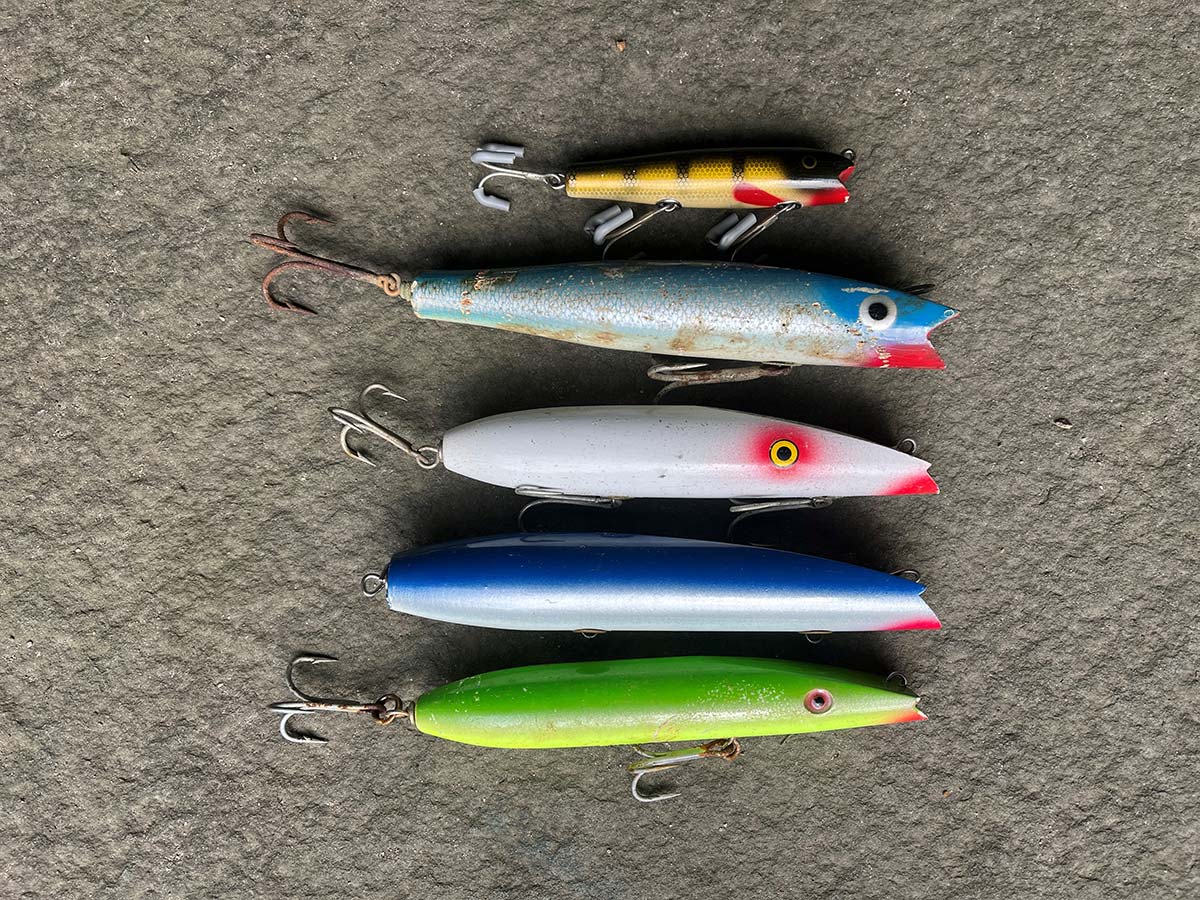
How and why the surfcaster’s most misunderstood plug works so well.
The darter is probably the most misunderstood plug available to the surfcaster. The name suggests more action than what we actually get when we throw such classics as the Super Strike Zig-Zag or a Beachmaster 3-ounce. And yet, there are others that dart so wildly that they fight the rod like a schoolie bass! The name and the relative inactivity of the tried and true classics, often leads the uninitiated surfcaster to abandon the darter in favor of other, more active, plugs: this is a mistake.
The design itself borders on pure genius. The first darters that I’m aware of were made by Creek Chub back at least as far as the 1940’s, they were born into freshwater, but the Surf Darter from Creek Chub was the first one that I know of, designed for the salt. I think it’s likely that the Creek Chub was the first ancestor of the first darter released by Gibbs which is what nearly every darter surfcasters use today is based off of.
It took a well-trained mind to understand how the water would rush faster over the sloped top of the plug, forcing it underwater. But, without that little jawline lip, it would eventually be overcome by the force of forward motion and roll out to one side. That little lip at the end of the slope, gave the darter stability in current. The last landmark modification was the fixed line tie adapted by Donny Musso. The Creek Chub Surf Darter utilized a ring that was held in place by a moveable hanger which would present problems if it was twisted, the Gibbs used a screw eye that surfmen of that era would go to great lengths to fasten using glues and epoxies, Donny made his thru-wired and epoxied the wire into place, solving the last problem and making it possible for the darter to be made with consistency and durability.
The darter works thanks to a few principles, the slope allows the water to flow over the top of the plug faster than the bottom creating a phenomenon I refer to as ‘reverse lift’ because it’s pretty much how an airplane wing works, just upside down. The heavier wood (usually maple) is less buoyant, making it easier for that slope to pull the plug underwater. The wood (or plastic) removed when cutting the slope also makes the forward half of the plug less buoyant, further encouraging it to dive. We already know that the lip gives the plug stability, this happens because it redirects just enough water under and around the sides to keep it stable.
The rest is a balance of buoyancy, stability and the weight of the hooks. As the plug is pulled under, the body will tilt in one direction and the flat face of the slope will accentuate that, sending the plug out to one side. At some point in this maneuver, the weight of the hooks, coupled with the buoyancy of the tail end of the plug will force the plug to ‘right itself’ and then the process repeats again on the other side. This is why we see that searching ‘S-pattern’ from a well-designed darter.
There is a direct relationship between the length of the darter and the width of the slope, short, wide darters tend to veer wildly, while longer skinnier versions will usually produce subtler movements. My opinion is that subtler darters are far more effective than the wild, abrupt and confused actions of a short and wide version.
The lightbulb lit for me when I started to think of the darter as a needlefish that held in current. This worked for me because I made me stop looking for any kind of input back from the plug. Just like when fishing a needle, I trusted that it was doing what it was supposed to. Something that might help anglers who are just getting into the darter game is to sharply lift the rod a foot or two every five cranks or so, this will cause the darter to lurch forward and give you some connection to the plug, there have also been nights when that action was the key to drawing strikes.
When fishing in current, I cast to about 10 o’clock and try to get tight to the plug right away, then I crank it hard to get it down and begin following the plug until it passes my position and turns into the tide – this is often the point when the strike occurs. From there I will slowly retrieve the darter, swinging in the tide until it swims back to my rock. But, despite decades of surfcasting folklore, the darter does not need current to be effective. Darters, like the Super Strike, are deadly when cast from the open beach and retrieved at various speeds, just remember that you’ll get even less feedback from the plug in these situations and you have to trust that Stan Gibbs and Donny Musso knew what they were doing when they put their personal touches on this must-have classic plug.



